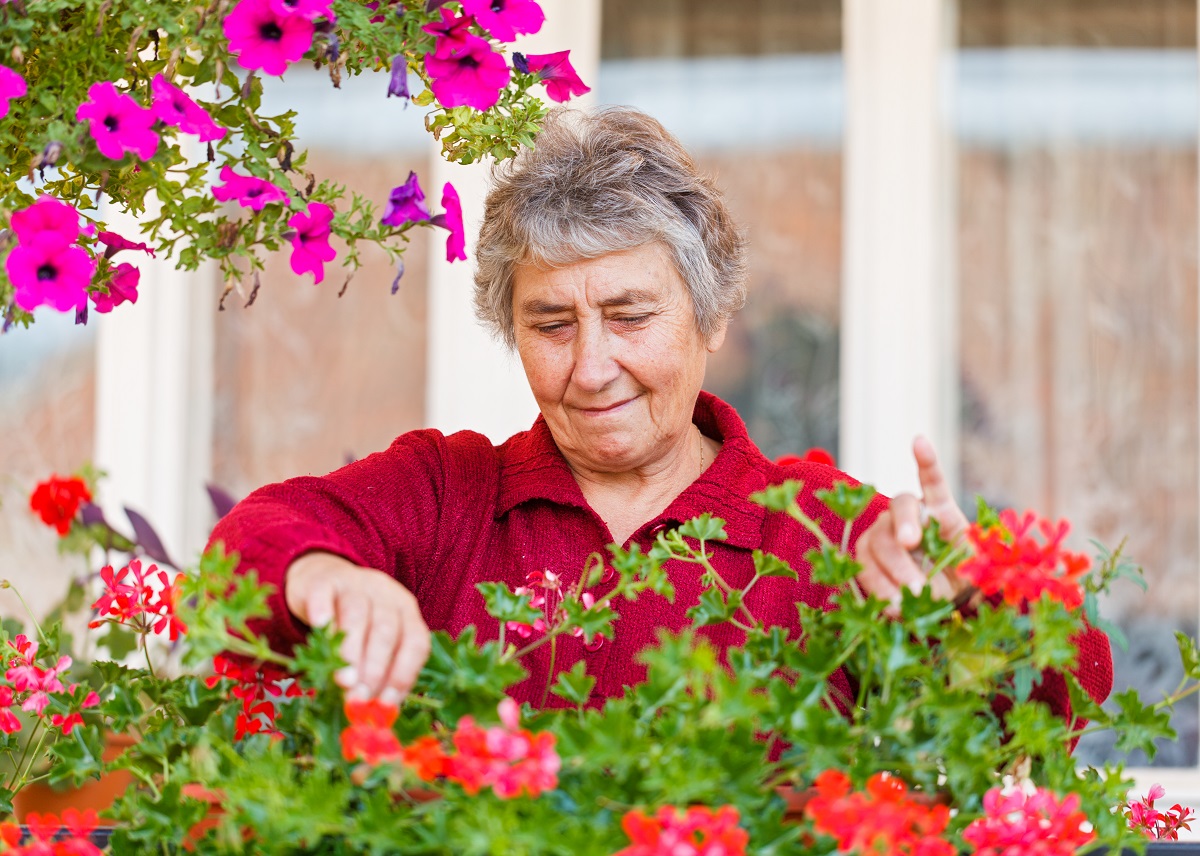Dementia gardens are found in many healthcare and residential environments for those with memory issues. Some are sensory gardens that offer a delightful mix of colors and smells while others are therapeutic gardens where dementia patients might engage in horticultural therapy in addition to sitting in a beautiful outdoor space.
Building dementia gardens is a wonderful initiative often implemented in care facilities for people with Alzheimer’s disease and other forms of dementia. It has been shown that these gardens have many benefits for both physical and mental health. Whether the residents are allowed to garden or just relax and enjoy the area, there are still many benefits.
What Is A Dementia Garden?
A dementia garden is a garden specifically designed for use by older adults who are in some stage of dementia. Gardening has many benefits, and those gardening activities increase the quality of life for individuals struggling with dementia. Ever just being in a grade can engage the senses.
Dementia-friendly gardens are often found in assisted living facilities, nursing homes, or long-term memory care facilities for people with Alzheimer’s or other forms of dementia.

Sensory and Therapeutic Gardens
Two types of gardens are popular for dementia patients. The benefits overlap,
A sensory garden has a specific intention of engaging the five senses (or as many senses as can be engaged). When designing the garden, the landscaper designers intentionally appeal to the sense of smell, sight, touch, sound, and taste. Is it possible to reach every sense? Not always. However, there are many creative ways to appeal to visitors.
Adding windchimes to a garden will add sound, for example. Birdhouses will add something pretty to look at and hear birds chirping. Flowers smell good and are colorful and visually appealing to further stimulate the senses. Adding features like a waterfall can add both a visual and auditory dimension.
Tactile components can be anything from flowers or stones that residents can touch. When residents can engage in gardening, feeling the dirt between their fingers appeals to the sense of touch.
A therapeutic garden, also called a healing garden, engages and benefits people as they can participate in the process of growing plants. One way gardening is therapeutic is because it pushes residents to do things they might not otherwise do, such as getting more sunshine or moving around while digging around in the dirt. There are both physical and emotional benefits to this.
Therapeutic gardens can also be emotionally healing as the residents spend time in a beautiful part of the landscape. In other words, the environment, not the physical work, has healing and relaxing qualities. These can help people who are feeling depressed and lonely or patients with dementia.
- Healing – uses plants to encourage healing
- Enabling – focuses on patient participation, so they feel they have a purpose
- Meditative – helps restore emotional and psychological balance
- Rehabilitative – focused on rehabilitating the patient and the environment
- Restorative – relieves stress and restores calm, especially for people living with PTSD
Why Is It Important To Have A Garden For Dementia Patients?
According to the Alzheimer’s Society, dementia gardens offer many physical and mental benefits to people with memory issues. What are the benefits of dementia gardens?

1. Better Sleep
People who regularly use dementia gardens have reported improved sleep. This effect, along with increased bone density and better moods, results from direct sunlight.
2. Improves Physical Wellness
Gardening has been shown to decrease blood pressure and improve overall physical health. Being outside gives people both fresh air and Vitamin D they might otherwise not get. Garden users may have fewer falls and injuries.
3. Social Interaction
Providing green space for residents and allowing them to care for the plants allows for social interaction among the residents and even family members who are visiting. The environment downplays that the garden is at an institution,
4. Physical Activity
Gardening can help get people moving around. Whether they are just strolling in the garden enjoying the sensory experience or planting and caring for the gardens, gardening can work both fine and gross motor skills.
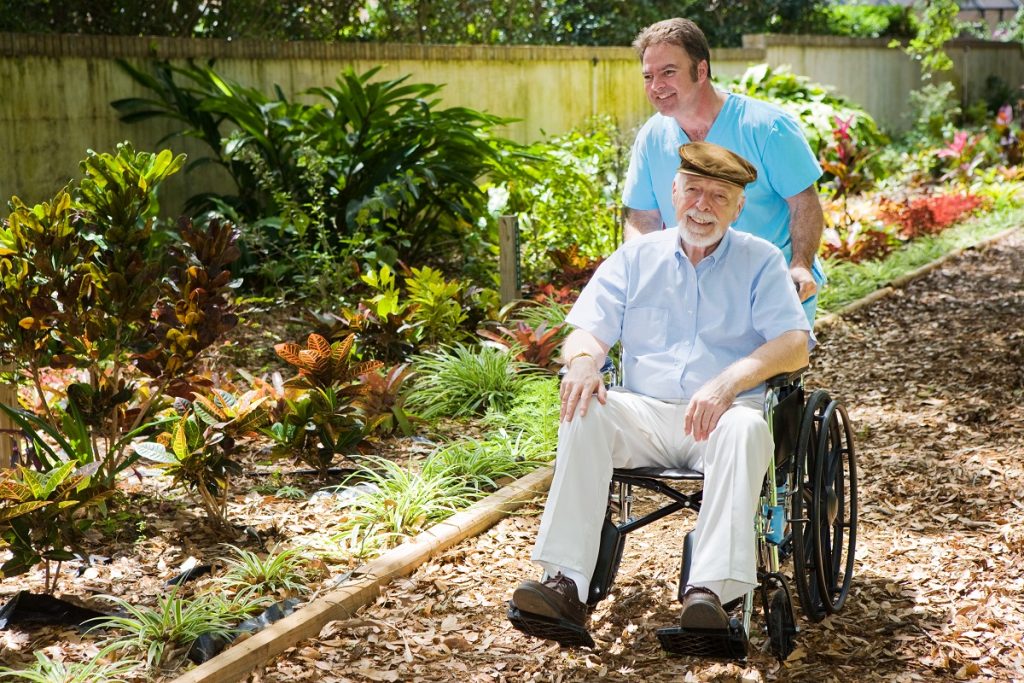
5. Improves Brain Function
Gardening increases attention spans and brain volume and promotes cognitive skills. It can even help patients regain lost skills or learn new ones.
6. Relaxation and Zen
Gardens naturally have a calming quality about them. A care home might add a water feature or two to help facilitate that atmosphere. Putting some bird feeders in the garden adds even more to focus on.
7. Better Mental Health
Relaxing and spending time in a garden boosts mental health. The pursuit may temporarily distract them from fixations and lower levels of aggression and agitation.
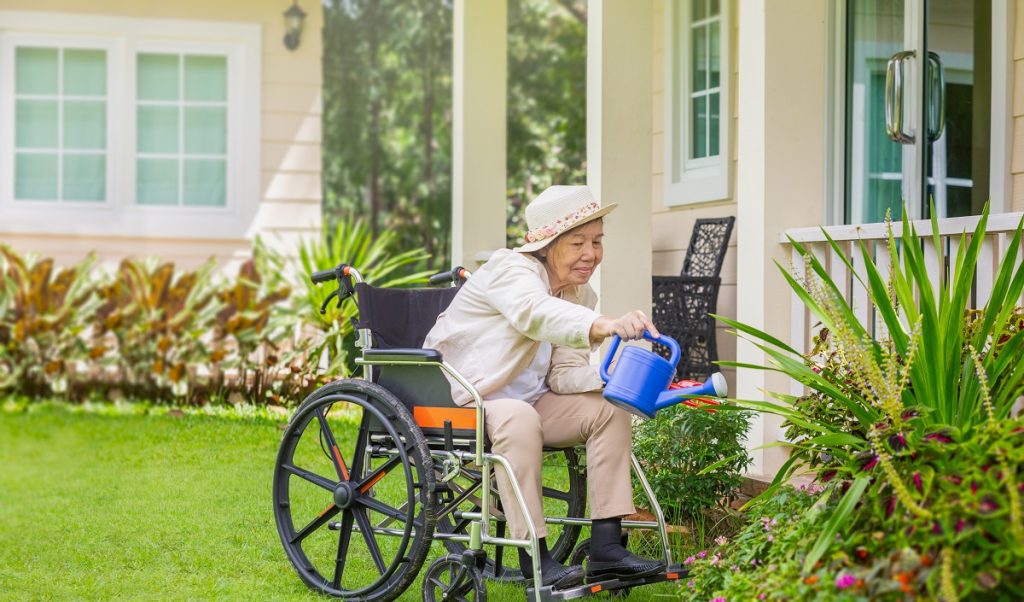
8. Enjoyable Activity
Gardening gives a person with dementia a sense of ownership as they care for plants. The atmosphere is relaxing, and patients can enjoy themselves without the focus being on their condition.
How Can A Garden Help Someone With Memory Loss?
Gardens can bring a person back to a beautiful spot in their memory, even if they are not sure of what is happening in the present. Memories are funny things in that regard. It is fascinating that sometimes people who can’t remember what happened yesterday can fall back into an old habit of pruning flowers or pulling weeds. Those old memories are usually easier to dredge up than more recent ones.
Benefits of Gardening For People With Alzheimer’s Disease
According to the Alzheimer’s Society, gardens are excellent for those with Alzheimer’s and other forms of dementia. Helping in a garden provides meaningful activities that can raise someone’s self-esteem. Working with gardening tools is excellent for dexterity, and walking around the gardens works gross motor skills while adding exercise.
But what about people who can no longer participate in gardening? Research shows it helps them also. Gardens provide sensory stimulation that has proven helpful to people.
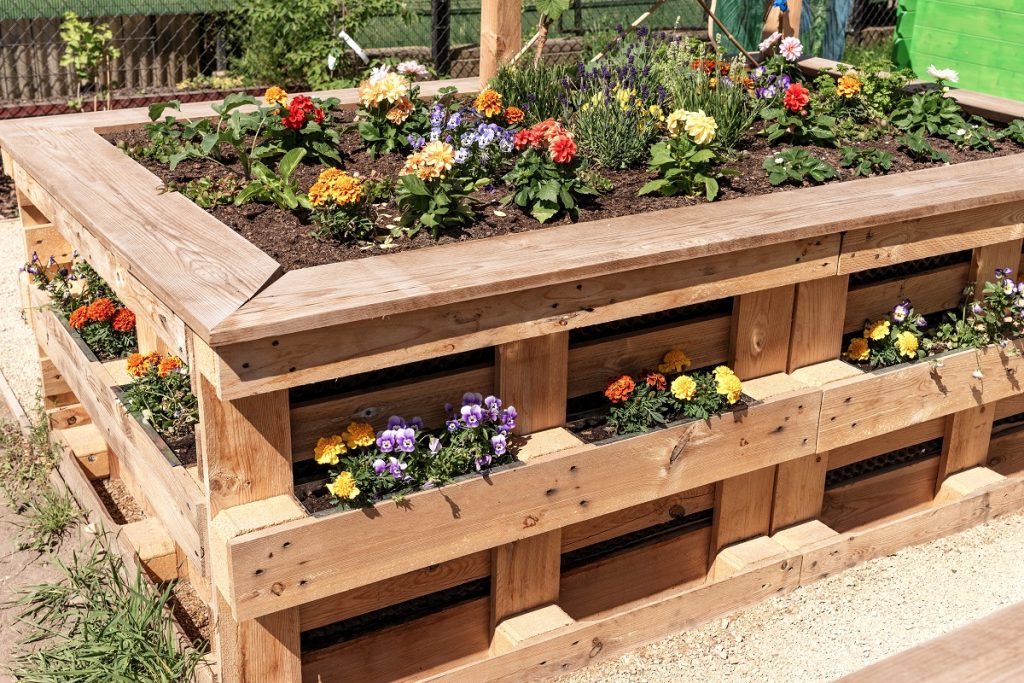
What Should An ideal Dementia Garden Contain?
Many types of dementia gardens are designed for dementia patients who reside in facilities. However, those planning gardens for dementia patients who live at home can incorporate the concepts.
An ideal dementia garden should contain:
- Bird houses and feeders to add both sound and a fun visual to the garden.
- Covered areas to offer some shelter so that residents can still sit outside in rainy weather and prevent overexposure to the sun on a nice day
- Fast-growing items where progress is quick and visible
- Gardening tools manageable for older hands
- Paved walkways that are easy to navigate for those in wheelchairs and walkers
- Raised gardens that make participating easier for people in wheelchairs or difficulty kneeling or bending down. Built with wooden legs like a table or like a box, raised garden beds can be built in various heights for easier accessibility.
- Safe plants that are non-toxic and without thorns
- Seating such as benches and other types of seating, including comfortable places to rest
- Statues add interest
- Sunlight offers needed exposure to Vitamin D. (Some of the garden should be shaded, though.)
- Variety of flowers and plants
- Water Features, such as fountains, waterfalls, or small ponds. Don’t hesitate to put fish in the ponds. Watching fish is also relaxing.
You can make the space a butterfly garden by planting flowers that attract butterflies and even adding butterfly houses. Feeders will bring squirrels, chipmunks, and other wildlife to the garden.
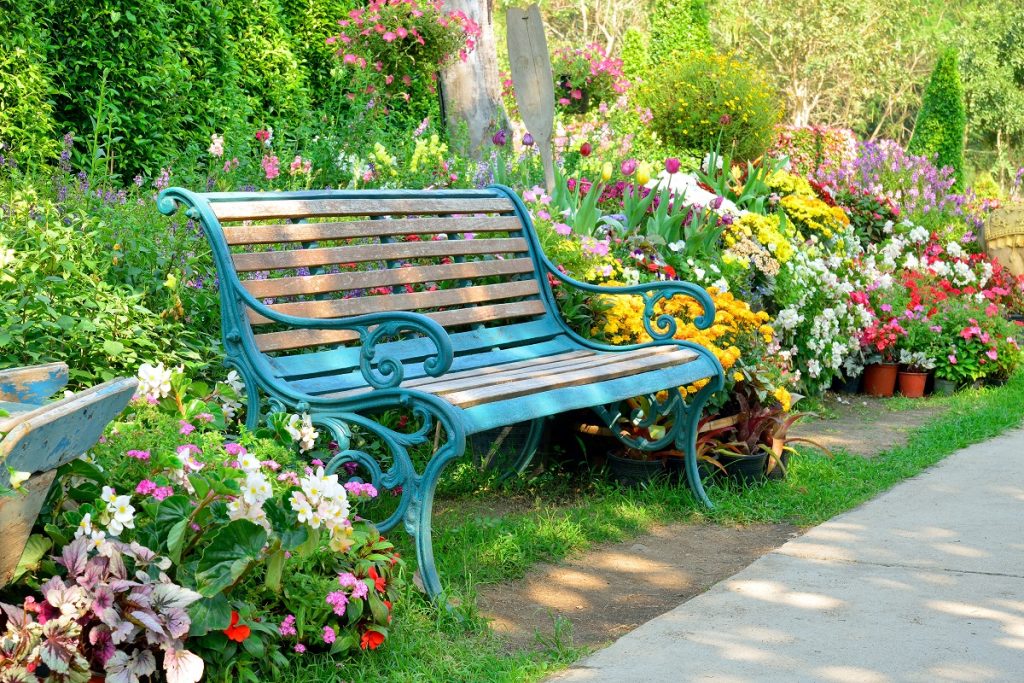
Are Certain Colors Recommended In The Garden?
There are no set rules on colors for dementia gardens, just add variety. However, red, blue, and green are excellent colors for dementia patients. Why?
- Red helps the memory and even faster heartbeat and faster breathing.
- Green is calming, tranquil color reminiscent of nature. It is easy on the eyes.
- Blue offers tranquility and creativity.
A plethora of colors stimulates the senses and enhances the garden for residents, caregivers, and visitors.

